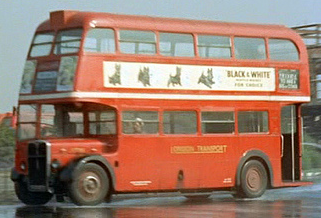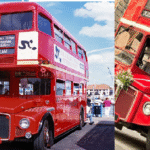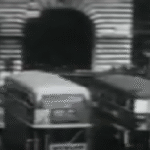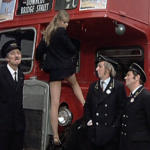The actual word ‘Bus’ is an a shortening of the Latin word ‘Omnibus’ which means ‘For All’. The first recorded incidence of an omnibus service was a horse drawn public omnibus service introduced by Blaise Pascal in Paris, France. The service lasted 15 years before being withdrawn because the cost of the service had become beyond the means of the general public with only the more wealthy being able to afford the cost of a ticket and laws that restricted the use to certain groups, which is rather ironic given the original Latin meaning of the word Omnibus…’For All’.
Historians look to John Greenwood as being the first person to start a regular omnibus service when back in 1824 he began a bus service between Pendleton and Manchester. He allowed passengers to use the service without making bookings which was a novel idea at the time. He also allowed pick up and drop offs along the route on request. Some time later, he added further destinations including Buxton, Chester, and Sheffield. Such was the success of his new bus service, many other entrepreneurs saw the value of such a service and before long many other bus companies appeared. John Greenwood later joined forces with many of his competitors and formed the Manchester Carriage Company.
However, the success of the bus was not unchecked, buses faced a new type of competition from the first Tram service which appeared in 1860 and ran from Woodside Ferry to Birkenhead Park and was able to carry up to 48 passengers. Ironically the Tram service was introduced to Britain by a man named George Francis Train. Trams offered more comfort than buses because they ran on rails and because of the relative stability of the surface they were able to carry more vehicles and passengers. The 1880s saw the electrification of the Tram system which spelt the end of the predominance of horse power.
Despite their comfort trams were restricted to routes with rails in contrast to buses which could travel almost anywhere. Buses continued to improve and with the replacement of the Knifeboard seat with The Garden Seat comfort and capacity increased further. A major turning point in the history of the bus was the appearance in 1904 of Edinburgh’s first motor bus service using the Milnes Daimler Motor Bus Daimler Petrol Wagonnete. The petrol engine bus had arrived and with further innovations including forward facing seats and the replacement of ladders with staircases the advantages of the Tram were slowly disappearing.

The success of petrol engine buses led to an explosion in bus manufacturing and Milnes Daimler Motor Bus went on to produce the Straker-Squire. By 1908 over 1000 were in use on the streets of London. With a front mounted engine and transmission initially driven by drive chain and later by drive shaft, the Straker-Squire became a big success. In 1910 the London General Omnibus Company B type was introduced which was an amalgamation of all the innovations and success of previous bus designs. With a speed of 35mph and improved reliability the B type became part of the biggest bus fleet in London 1920 saw the arrival of the pneumatic tyre which because of the feeling of floating on air meant that at a stroke the advantage of the smooth ride enjoyed by trams because they traveled on rails was removed and traveling on rails became their biggest disadvantage. The 1920s also saw the appearance of the Leyland Lion which had the first purpose built chassis which enabled the saloon floor to be lowered making it easier for passengers to get on and off the bus.
In the 1930s the Associated Equipment Company A.E.C. for short, was mass producing buses for London. Of particular significance was the diesel-powered S.T.L-type bus built in 1932 which is considered to be the first modern London bus. In 1939 A.E.C produced the R.T. bus.
Post war, the London Transport stock was in decline due to the war effort. Money was sparse and the existing stock was in a state of disrepair with very few parts available for repairs. In 1954, in a similar design and style to the RT bus, the Routemaster prototype appeared (R.M-type). It was a lighter bus than the RT because of the aluminum body, and carried 8 more passengers with a capacity of 64 as opposed to the RT. A lighter body also allowed for lower fuel costs and better fuel efficiency.







